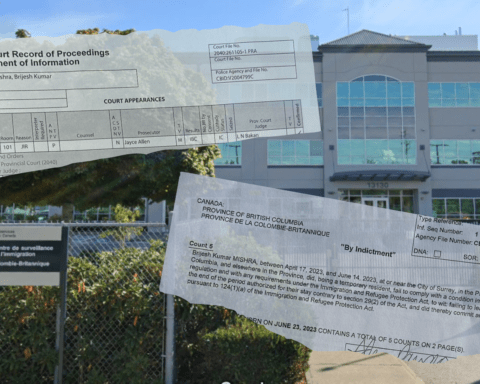I’m the child of Indian immigrants and, for my family, ‘Indian Standard Time’ is a term used to determine that even when we are running late, we are arriving with the party in full-swing. In the case of trade negotiations between Canada and India, we have reached Indian Standard Time.
Our two countries have long had a ‘complex’ bilateral relationship. While the previous Canadian government was able to successfully end a long-simmering nuclear dispute, allowing for the sale of Canadian uranium to India, it was unable to complete the free trade negotiations started back in 2010. Several cabinet ministers have visited India over the past two years, in addition to visits by various provincial premiers and big-city mayors to encourage more bilateral trade and investment between their respected jurisdictions.
But progress remains slow on a formal trade agreement.
Part of the reason for this slow progress is the lack of high-level discussions between Prime Minister Trudeau and Indian Prime Minister Narendra Modi. With Trudeau visiting China twice and hosting President Xi Jinping in Canada, Indian officials may wonder how high of a priority trade with India is for the Canadian government. China and India are regional rivals economically, militarily and politically. They want assurances Canada cares and understands India.
Trudeau experiences a high degree of popularity amongst India’s population and within the Indo-Canadian community, an important political force in Canadian politics. To appease his key voter base and the interests of Canadian businesses, Trudeau will need to maximize his impact during his trip to India.
The purpose of this trip will be threefold: First, to quell any concerns Prime Minister Modi may have with the priority Canada has assigned to its relationship with China; second, to address any issues arising from the differences between the Indian and Indo-Canadian diasporas; and lastly, on issues impacting trade negotiations.
It will be part of Trudeau’s task to get Modi’s focus on the urgency and benefits of stronger trade ties with a trade agreement and use his popularity and charisma to show Modi that his commitment to improving our bilateral relationship is real and not calculated to only shore up domestic support.
South Asians in Canada hold tremendous political influence reflected by the appointment of four Sikh-Canadian ministers in important portfolios, and nearly two dozen MPs and Senators currently serving our country. Indo-Canadians have become engaged citizens who are shaping industry, culture and policy for Canadians. Addressing the delicate relationship between the Indian and Indo-Canadian diasporas will aide Trudeau to move negotiations forward.
Finally, Trudeau will be looking to address core economic issues such as agricultural exports to India, access to natural resources and migrant skilled workers coming to Canada. At the moment, India has raised tariffs on pulse seed imports, the majority of which comes from Saskatchewan. Canada produces a third of the worlds pulse crops (ex. lentils, peas, chickpeas) and this will have a ripple effect throughout the Canadian agricultural industry.
India and Canada can benefit from greater mobility of technology-trained workers, such as software engineers, between both countries. With the Waterloo-Toronto corridor and Bangalore-Hyderabad tech-centres hosting a thriving technology sector, a trade agreement would be able to enhance a bilateral ecosystem for companies to further develop.
Of most importance for Trudeau will be securing environmental and labour standards that have become core negotiating principles for this government. Canada’s leverage to securing these standards is giving India its first free-trade access to a Western market, including Canadian businesses that have access to North America, the EU, several countries in South America and potentially 10 Pacific-coast nations. Amidst the populist rhetoric to protectionism and anti-trade, Trudeau is positioning Canada as a beacon of economic opportunity that India would benefit from tremendously.
This trip to India, if successful, may cement Trudeau’s ability to deliver on his promise to diversify Canadian market access and reduce our dependence on the Americans, who continue to play Russian roulette with NAFTA discussions. Given the NAFTA risks, Canada needs this trade deal more than India does — to which Trudeau must move quickly before he loses any leverage in these talks.
This piece was republished under arrangement with iPolitics.




